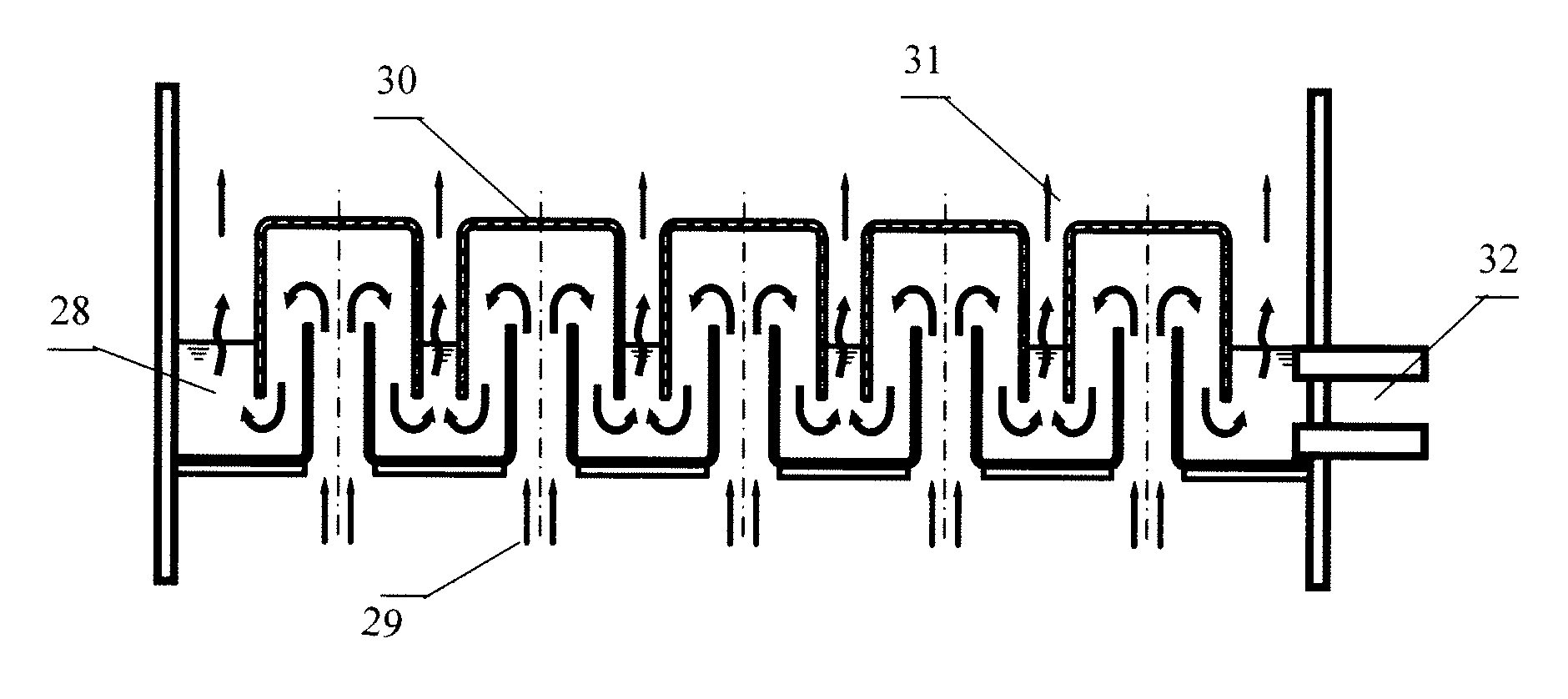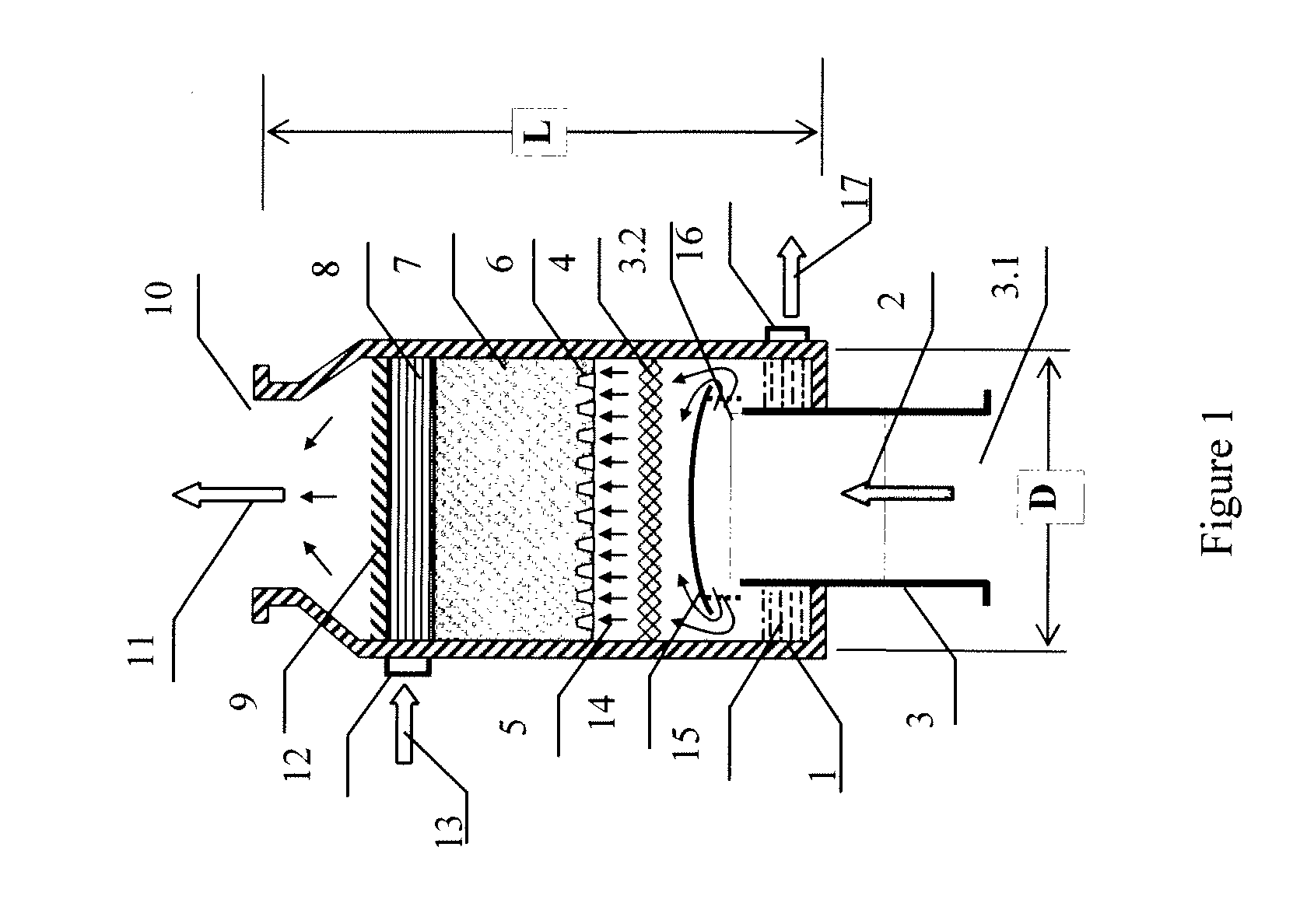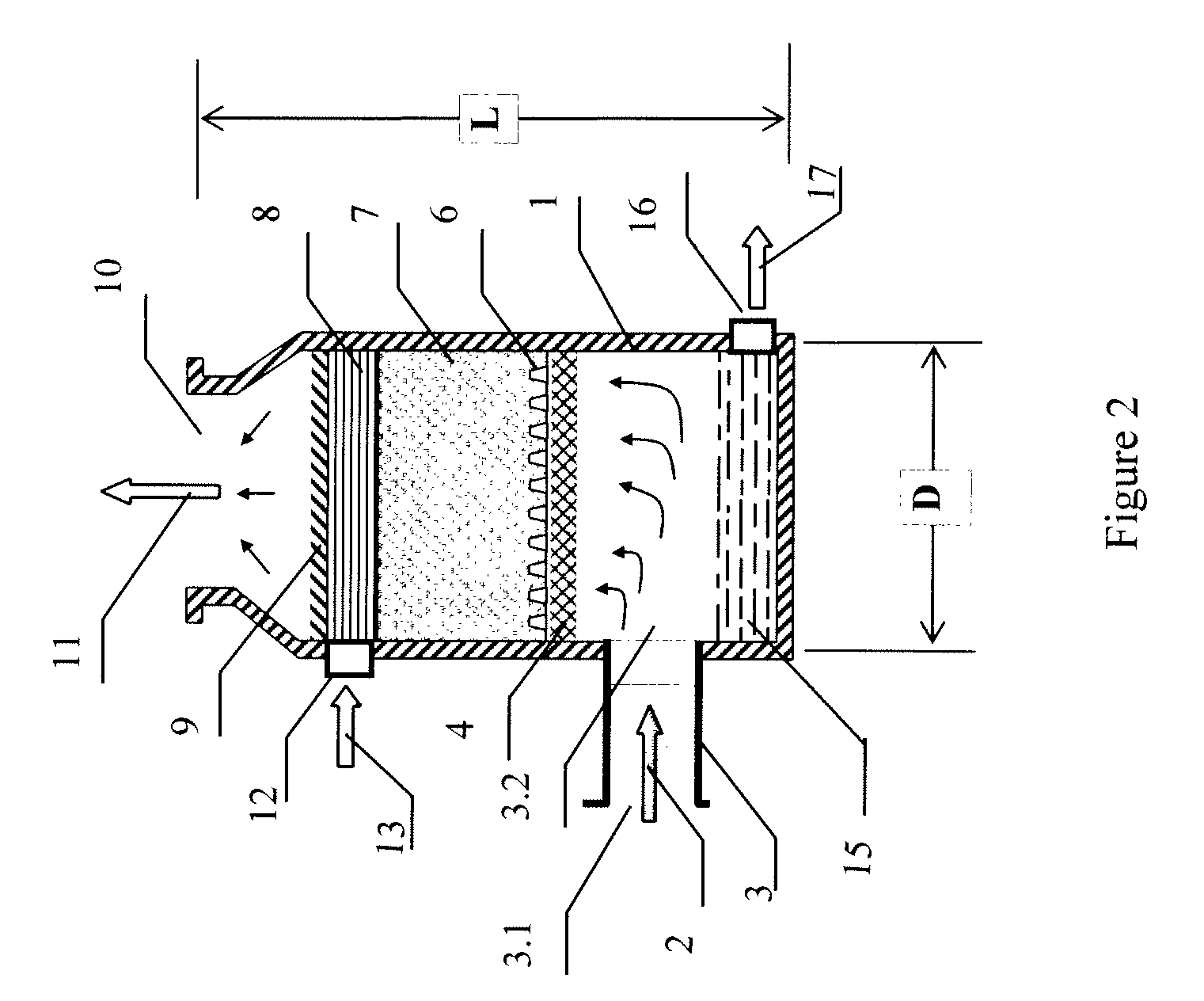Ship Flue Gas Scrubbing Equipment And Method
- Summary
- Abstract
- Description
- Claims
- Application Information
AI Technical Summary
Benefits of technology
Problems solved by technology
Method used
Image
Examples
application examples
[0065]Further description for the ship flue gas scrubbing equipment and method are given below combining figures and examples.
A. Examples for the Ship Flue Gas Scrubbing Equipment
example 1
[0066]As depicted in FIG. 1, an application in which the gas lead-in port 3.2 is fixed at the bottom portion of the shell 1 and reaches to the exit of the smoke pipe 3 inside the shell 1. It maintains the smoke pipe 3 staying above acidic seawater surface of the water tank 15, that is, the exhaust gas does not enter the acid seawater. It is suitable for situations where the flue gas is lead in vertically. It comprises a shell 1, a scrubbing section 7 which contains fillings. A water tank 15 with a seawater outlet 16 lies in the lower portion of the shell. On the wall of the said shell 1, there exists a smoke pipe 3 which lead the to-be-scrubbed exhaust gas into the shell 1 from the outside. One end of the smoke pipe 3 is the gas inlet 3.1, the other end is the gas lead-in port 3.2; the gas lead-in port 3.2 extends into the shell 1, and it lies between the scrubbing section 7 and water tank 15; the cooler 4 which used for cooling the high temperature gas 2 lies on the gas passage tha...
example 2
[0078]Depicted in FIG. 2 is another application for this ship flue gas scrubbing equipment. The difference to Example 1 is that the gas lead-in port 3.2 inside the shell 1 is at the shell 1, and it is an exit of the smoke pipe 3 that fixed on the wall of the shell 1. It maintains the smoke pipe 3 staying above acidic seawater surface of the water tank 15, that is, the exhaust gas does not enter the acid seawater. It is suitable for situations where the flue gas enters the scrubber horizontally and then goes upside. The water tank 15 comprises of wall and bottom portion of the shell 1 which below the horizontal cross-section of the inside-shell gas lead-in port 3.2 lower edge.
PUM
| Property | Measurement | Unit |
|---|---|---|
| Length | aaaaa | aaaaa |
| Temperature | aaaaa | aaaaa |
| Pressure | aaaaa | aaaaa |
Abstract
Description
Claims
Application Information
 Login to View More
Login to View More - R&D
- Intellectual Property
- Life Sciences
- Materials
- Tech Scout
- Unparalleled Data Quality
- Higher Quality Content
- 60% Fewer Hallucinations
Browse by: Latest US Patents, China's latest patents, Technical Efficacy Thesaurus, Application Domain, Technology Topic, Popular Technical Reports.
© 2025 PatSnap. All rights reserved.Legal|Privacy policy|Modern Slavery Act Transparency Statement|Sitemap|About US| Contact US: help@patsnap.com



